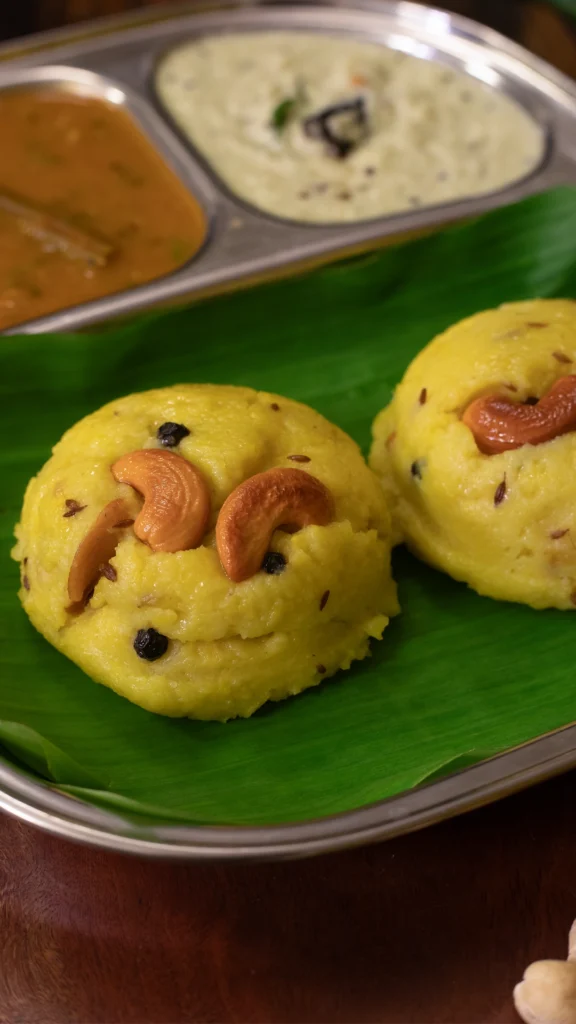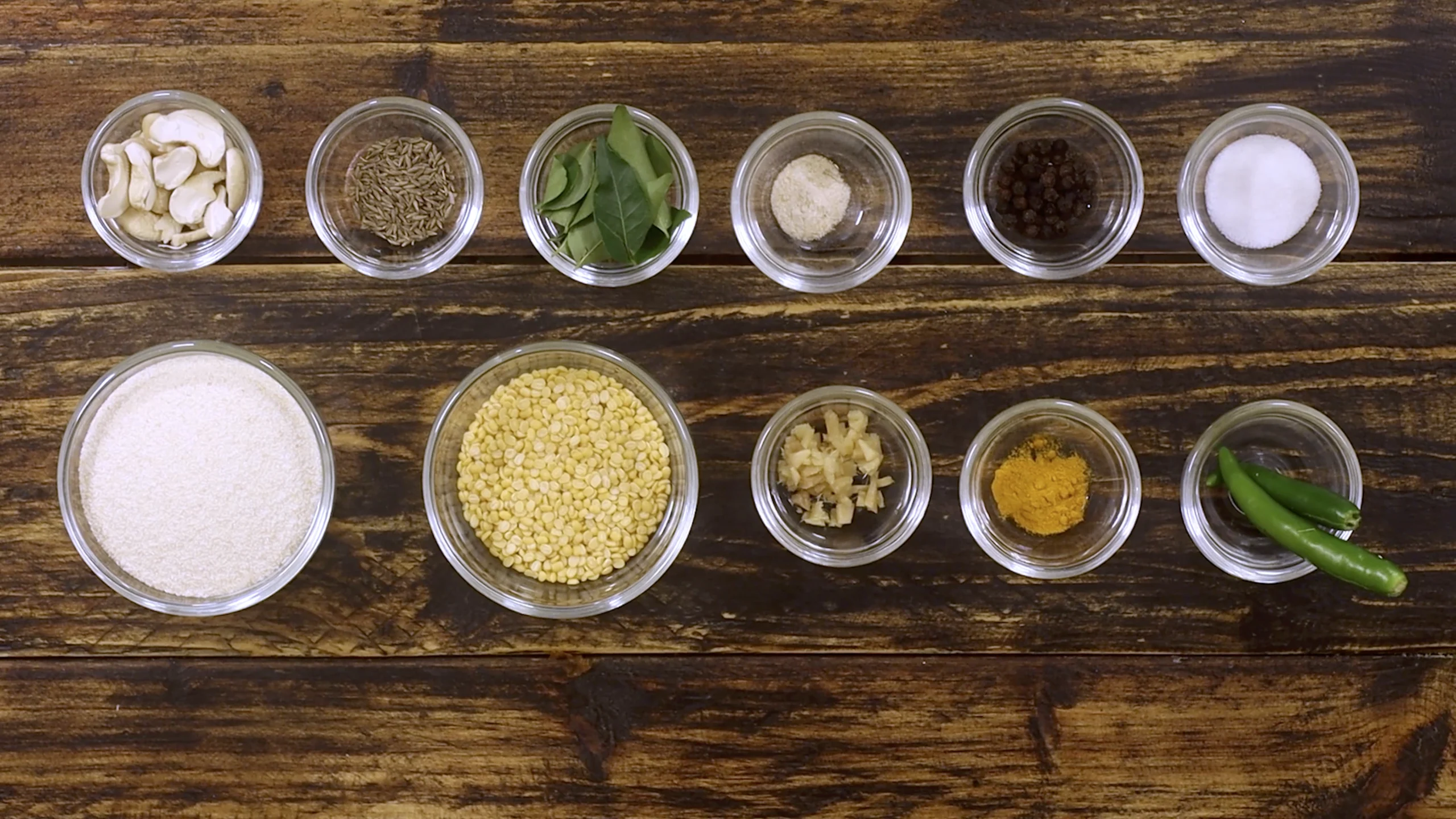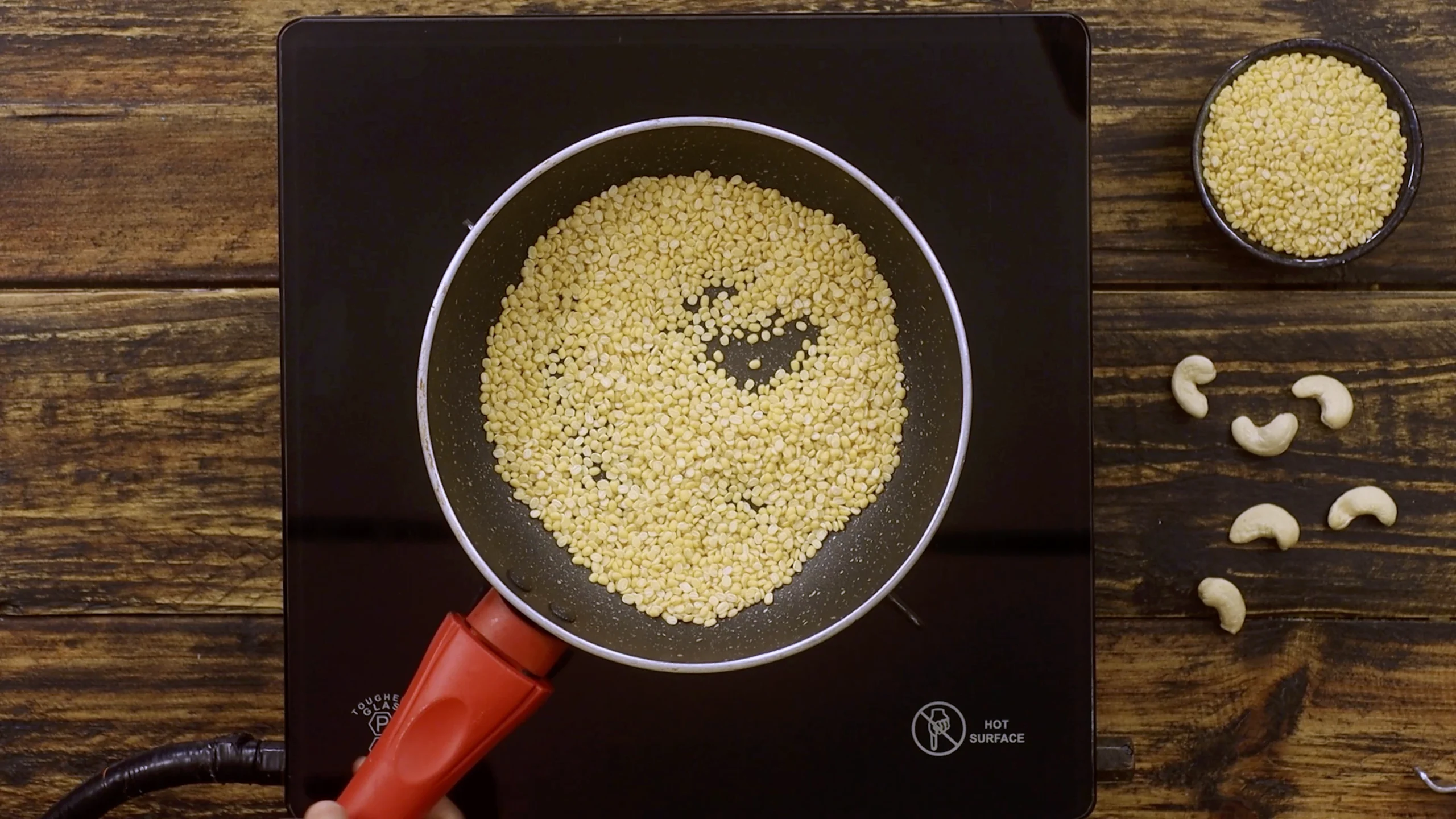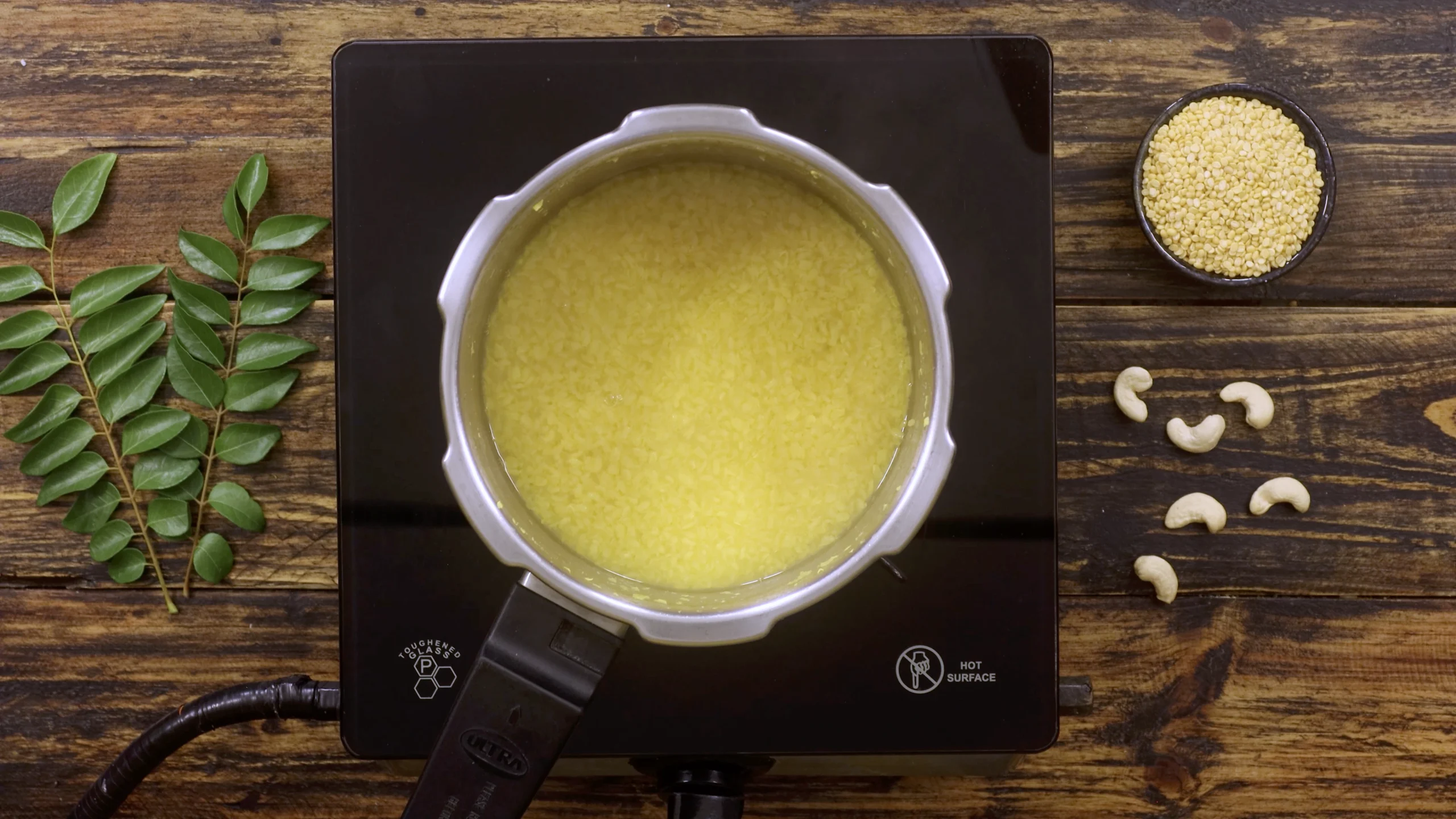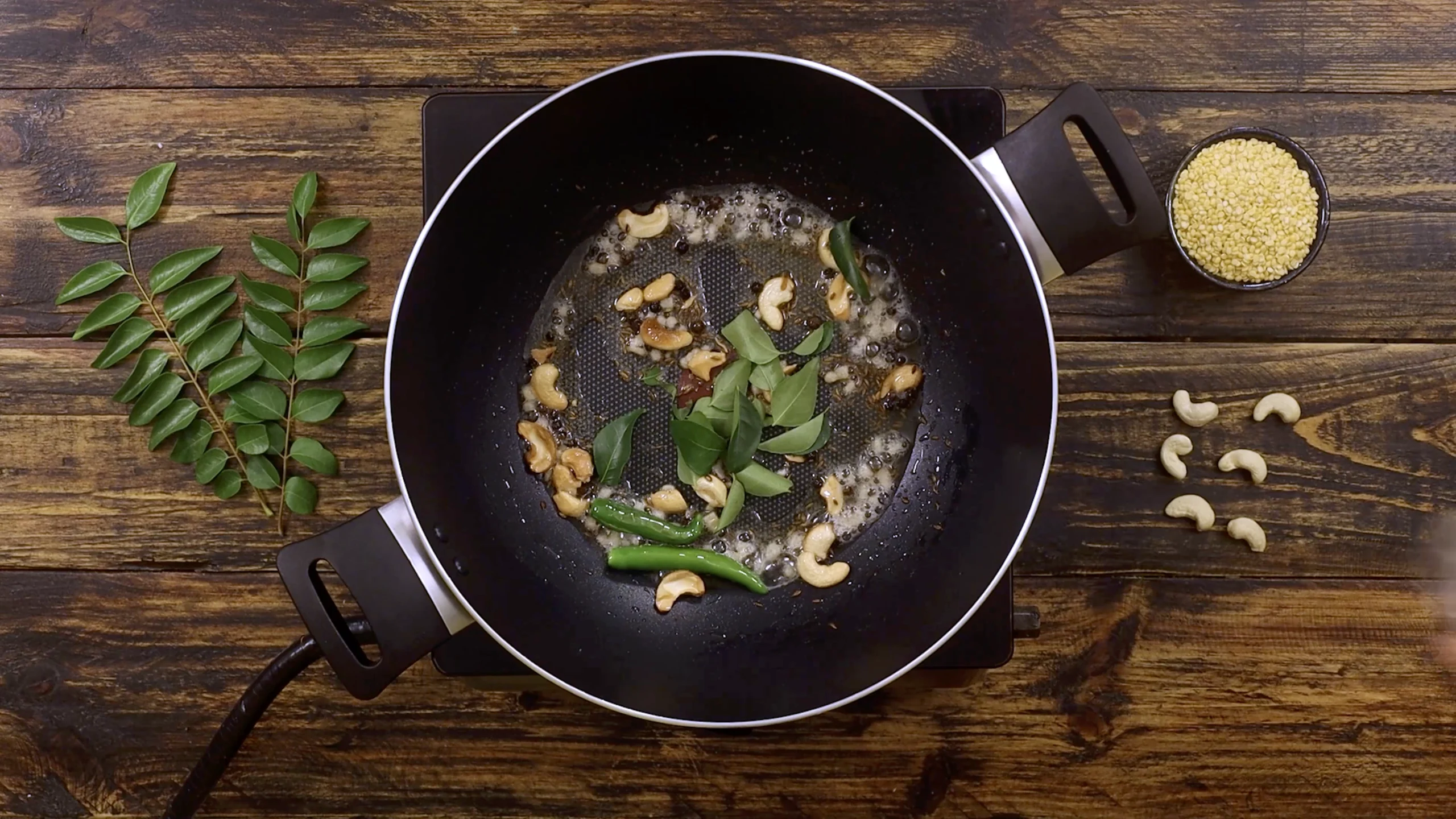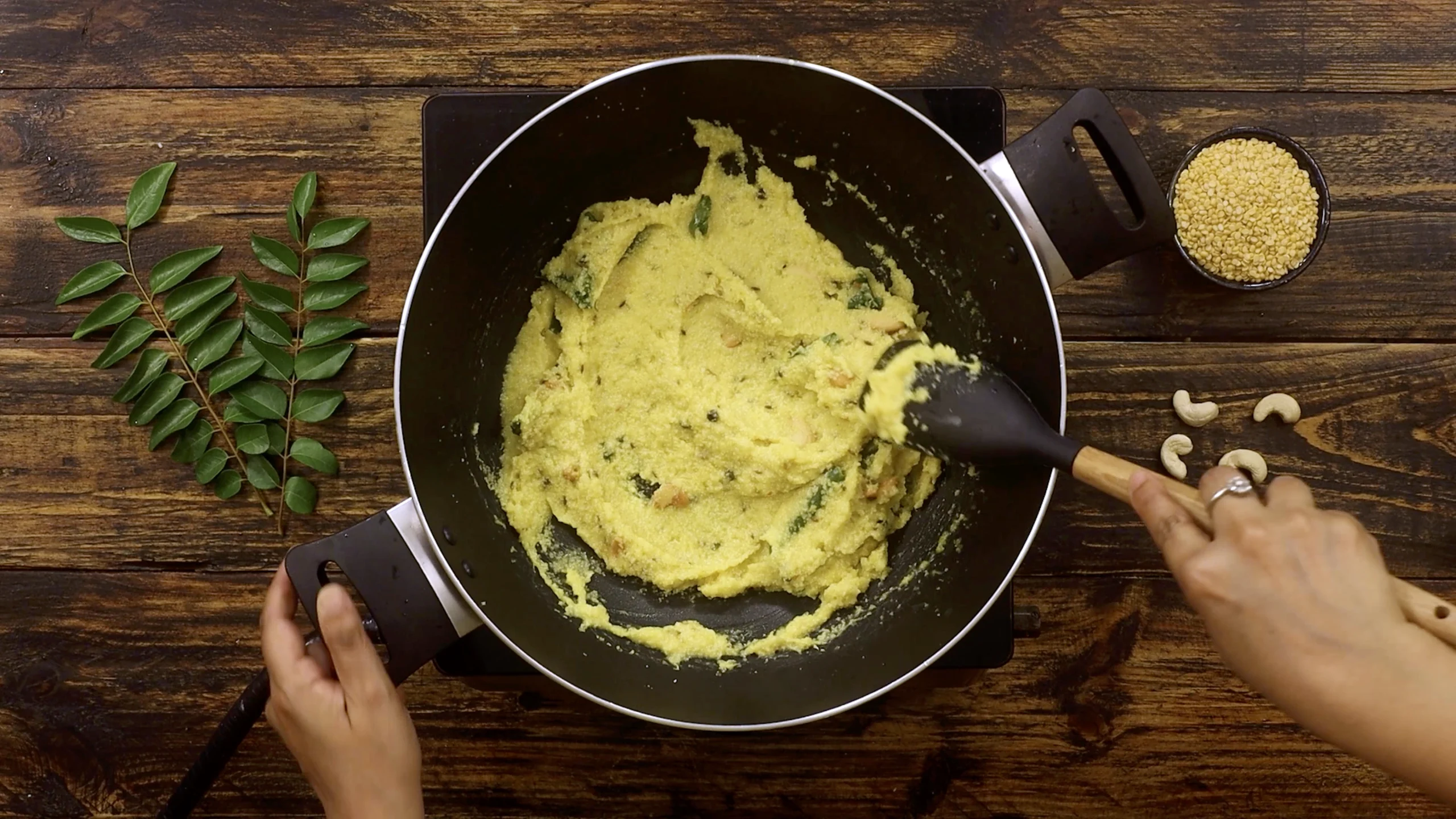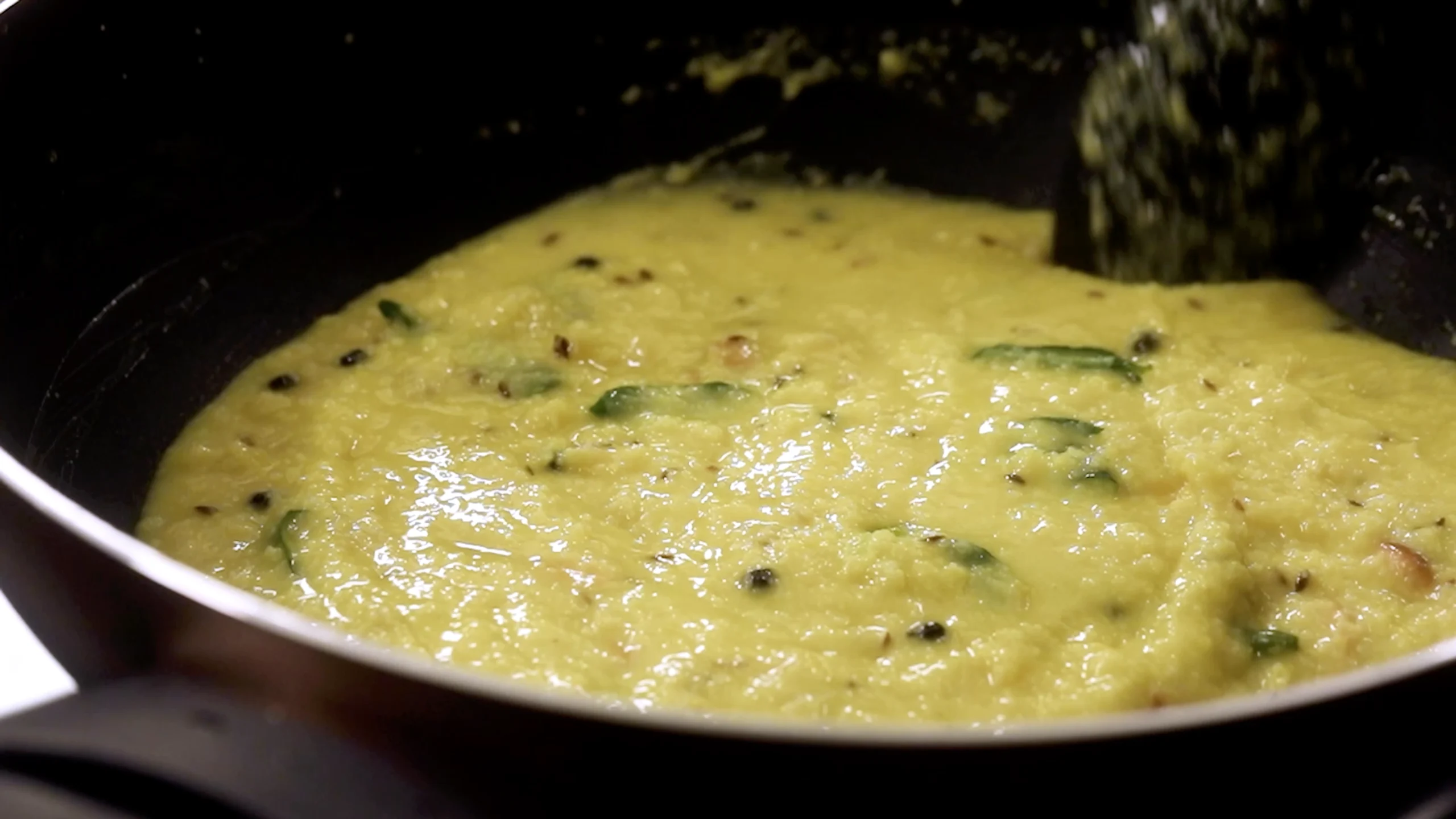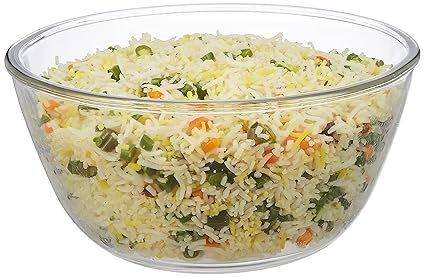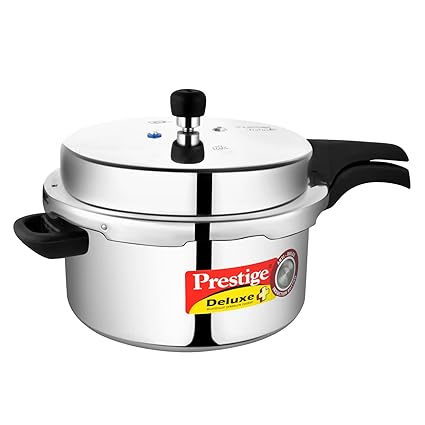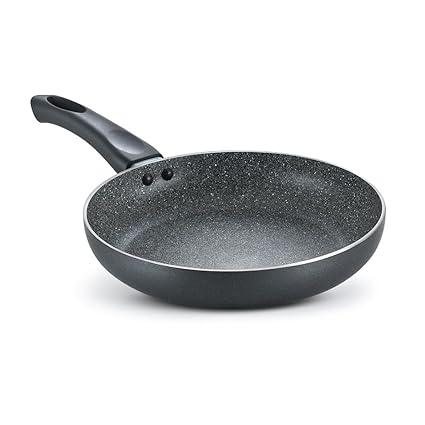Ever crave that creamy, soul‑warming bowl of pongal but want to switch up the grains?
Meet Rava Pongal—your new go‑to for a silky, spiced breakfast or comforting dinner.
Why You’ll Love Rava Pongal
- Quick & Easy: No soaking needed—semolina cooks fast, so you’re at the table in under 30 minutes.
- Gentle on the Stomach: Moong dal and rava blend into a light, digestible porridge.
- Flavorful Comfort: Toasted spices, curry leaves, ghee, and a hint of pepper create a savory hug in every spoonful.
Ingredients Breakdown
- Moong Dal & Rava (Semolina): Protein from dal meets the pillowy texture of rava.
- Peppercorns & Cumin Seeds: Pepper warms you from within; cumin aids digestion.
- Cashews: Adds a buttery crunch and healthy fats.
- Hing (Asafoetida) & Curry Leaves: Classic South Indian aromatics that balance heaviness.
- Ginger & Green Chilies: A gentle kick and digestive boost.
- Ghee & Oil: For richness and that restaurant‑style sheen.
🌿 Vegan Swap: Skip the ghee and double down on cold‑pressed coconut oil for a luscious vegan twist (and a hint of tropical aroma).
How It All Comes Together
First, you’ll dry‑roast moong dal until it gives off a toasty aroma—this brings out a nutty depth. Rinse, pressure‑cook with a pinch of turmeric, and set aside. Meanwhile, heat oil and a dollop of ghee in your kadai. Sizzle whole peppercorns, cumin seeds, and cashews until golden, then toss in hing, chopped green chilies, ginger, and curry leaves. A quick sprinkle of turmeric brightens everything.
Next, stir in the rava and toast until fragrant. Pour in your cooked dal, season with salt, and stream hot water while whisking to avoid lumps. Cover, let it simmer and thicken, then finish with a generous drip of ghee for that melt‑in‑your‑mouth finish.
 Pro Tip : For ultra‑silky pongal, use freshly cracked peppercorns—they release more essential oils than pre‑ground pepper.
Pro Tip : For ultra‑silky pongal, use freshly cracked peppercorns—they release more essential oils than pre‑ground pepper.
What Goes Along
- Tangy Coconut Chutney: Balances the creaminess.
- Sambar: A spicy‑tangy broth that turns this into a full South Indian feast.
How to Serve
Ladle into warmed bowls, top with more roasted cashews and a drizzle of ghee (or coconut oil), and serve piping hot.
Packing for Lunch
Keep pongal slightly looser than you’d serve it at home—add a splash of water before reheating to restore its creamy texture.
Party & Bulk Prep
Scale up easily! Cook dal and rava in batches, then finish the tempering just before serving to keep that fresh “tadka” aroma.
Ready for that next‑level comfort? Whip up a pot of Rava Pongal and let every spoonful transport you to your favorite South Indian café.
Rava Pongal
Description
Rava Pongal is a comforting South Indian dish made with roasted semolina (rava) and moong dal, gently simmered with aromatic spices, curry leaves, and a drizzle of ghee. It’s a warm, creamy one-pot meal that comes together quickly, making it perfect for a hearty breakfast or a light dinner. The flavors are mild yet satisfying, with a subtle kick from green chilies and the richness of toasted cashews. Whether you're new to South Indian cooking or just looking for a quick, wholesome recipe, Rava Pongal is an easy dish to fall in love with.
Ingredients
Instructions
Prep Work
-
Rinse dal
Wash the dry roasted moong dal under running water
-
Slit green chilies
Slit each green chili lengthwise -
Chop ginger
Peel and finely chop the ginger -
Separate leaves
Pluck a few curry leaves from the stem -
Measure spices
Keep pepper, cumin, turmeric, and asafoetida ready -
Portion ghee
Set ghee aside for final drizzle -
Measure rava
Measure out the rava and set aside -
Boil water
Heat water and keep it hot for later use
Method
-
Dry roast dal
In a pan, dry roast the moong dal on low flame until you smell a mild aroma
-
Cook dal
Wash the dal, then pressure cook it with water and a pinch of turmeric for 5 whistles -
Heat fats
In a kadai, heat oil and ghee together until hot -
Temper spices
Add peppercorns, cumin seeds, and cashews; roast until cashews turn golden -
Sauté aromatics
Add asafoetida, slit green chilies, chopped ginger, and curry leaves; sauté well -
Roast rava
Add rava and roast on medium flame for a few minutes until fragrant -
Combine dal and rava
Add cooked dal and mix until combined -
Add water and salt
Pour in hot water gradually while stirring. Add salt and mix well to avoid lumps -
Cook covered
Cover and cook on medium flame for a few minutes until the pongal thickens -
Finish with ghee
Drizzle ghee over the top, gently mix, and turn off heat -
Serve
Serve hot with coconut chutney or sambar
Nutrition Facts
Servings 2
- Amount Per Serving
- Calories 250kcal
- % Daily Value *
- Total Fat 9g14%
- Saturated Fat 3.5g18%
- Cholesterol 8mg3%
- Sodium 390mg17%
- Potassium 220mg7%
- Total Carbohydrate 35g12%
- Dietary Fiber 2g8%
- Sugars 1.5g
- Protein 6g12%
- Calcium 28 mg
- Iron 1.2 mg
* Percent Daily Values are based on a 2,000 calorie diet. Your daily value may be higher or lower depending on your calorie needs.

